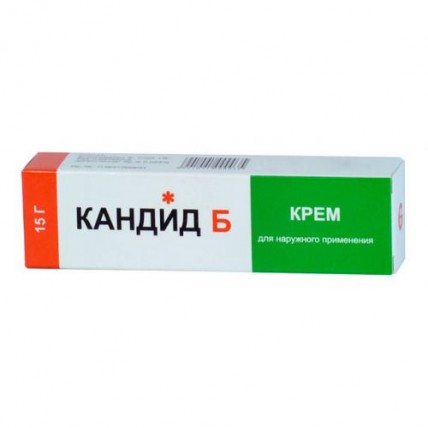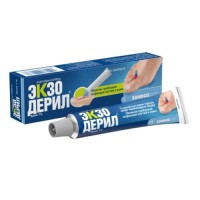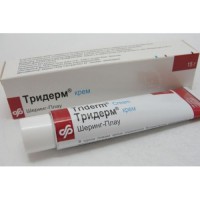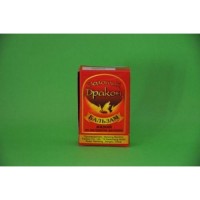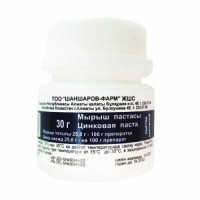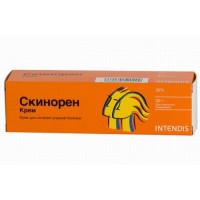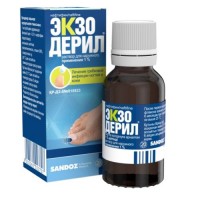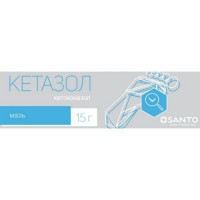Candid B (Clotrimazole + Beclomethasone) 1%, 15 g cream in tube
- $19.30
Out Of Stock
100g of cream contains
active ingredients :
excipients: benzyl alcohol, white petrolatum, liquid paraffin, cetomacrogol (emulsified wax), propylene glycol, methylparaben, propylparaben, butyloxytoluene, anhydrous sodium phosphate, sodium dihydrogen phosphate, purified water.
Indications for use
Fungal skin infections, especially if they are accompanied
acute eczematous manifestations:
- ringworm of various parts of the body
- athlete's foot, inguinal athlete's foot
- dermatoses complicated by secondary infection.
List of information required before use
Contraindications
- hypersensitivity to the components of the drug
- skin tuberculosis, chicken pox, herpes simplex, measles
- post-vaccination skin reactions, skin manifestations of syphilis
- actinomycosis, blastomycosis
- trophic ulcers against the background of chronic venous insufficiency
- skin tumors
- pregnancy and breastfeeding
Necessary precautions for use
The drug is intended for use only in dermatological practice. When using the cream, systemic adverse reactions are excluded, unless the drug is applied to open wounds or with sealed dressings. Avoid contact of the drug with the eyes; Do not apply to the skin in the eye area and mucous membranes. The development or spread of infection requires discontinuation of the drug and the appointment of antimicrobial therapy.
Interactions with other drugs
There is no data on the interaction of the drug with other drugs .
Special Warnings
Use in pediatrics
Use with caution in children from 2 to 16 years of age due to the possibility of increased penetration through the skin and the development of a toxic systemic reaction. The use of an airtight dressing in children under 5 years of age is not recommended. The use of the cream in pediatric practice should be strictly under the supervision of a physician.
During pregnancy or lactation
The drug Candide B is not used in women during pregnancy and lactation due to the lack of clinical data.
Features of the drug's influence on the ability to drive a vehicle or potentially dangerous mechanisms
Does not affect.
Recommendations for use
Dosage regimen
Externally. The cream is applied to the affected area in a thin layer 2-3 times a day and lightly rubbed. The previously affected area is washed and dried.
The duration of treatment for dermatoses is usually 3–4 weeks, for athlete’s foot – 4 weeks. If long-term use is necessary, it should be used less frequently - every other day. When treating chronic diseases, treatment should be continued for some time after all symptoms disappear in order to avoid relapse of the disease.
Measures to be taken in case of overdose
Acute overdose with topical application of Candide B is unlikely
and cannot pose a threat to life.
Recommendations for seeking advice from a healthcare professional to explain how to use the drug
It is necessary to consult a doctor to clarify the method of use of the drug.
Description of adverse reactions that occur with standard use of drugs and measures that should be taken in this case
Adverse reactions observed during clinical trials and post-marketing use are systematized for each organ system using the following frequency classification: very common (≥1/10), common (≥1/100, <1/10), uncommon (≥1/1000, <1/100), rare (≥1/10000, <1/1000) and very rare (<1/10000), including isolated cases.
Rarely
- redness of the skin, burning and tingling sensation at the site of application of the drug
Very rarely
- hypopigmentation, acne, contact dermatosis, skin atrophy, secondary skin infections. If skin irritation occurs, the drug must be discontinued.
active ingredients :
- Clotrimazole – 1,000 g
- Beclomethasone 0.025g,
excipients: benzyl alcohol, white petrolatum, liquid paraffin, cetomacrogol (emulsified wax), propylene glycol, methylparaben, propylparaben, butyloxytoluene, anhydrous sodium phosphate, sodium dihydrogen phosphate, purified water.
Indications for use
Fungal skin infections, especially if they are accompanied
acute eczematous manifestations:
- ringworm of various parts of the body
- athlete's foot, inguinal athlete's foot
- dermatoses complicated by secondary infection.
List of information required before use
Contraindications
- hypersensitivity to the components of the drug
- skin tuberculosis, chicken pox, herpes simplex, measles
- post-vaccination skin reactions, skin manifestations of syphilis
- actinomycosis, blastomycosis
- trophic ulcers against the background of chronic venous insufficiency
- skin tumors
- pregnancy and breastfeeding
Necessary precautions for use
The drug is intended for use only in dermatological practice. When using the cream, systemic adverse reactions are excluded, unless the drug is applied to open wounds or with sealed dressings. Avoid contact of the drug with the eyes; Do not apply to the skin in the eye area and mucous membranes. The development or spread of infection requires discontinuation of the drug and the appointment of antimicrobial therapy.
Interactions with other drugs
There is no data on the interaction of the drug with other drugs .
Special Warnings
Use in pediatrics
Use with caution in children from 2 to 16 years of age due to the possibility of increased penetration through the skin and the development of a toxic systemic reaction. The use of an airtight dressing in children under 5 years of age is not recommended. The use of the cream in pediatric practice should be strictly under the supervision of a physician.
During pregnancy or lactation
The drug Candide B is not used in women during pregnancy and lactation due to the lack of clinical data.
Features of the drug's influence on the ability to drive a vehicle or potentially dangerous mechanisms
Does not affect.
Recommendations for use
Dosage regimen
Externally. The cream is applied to the affected area in a thin layer 2-3 times a day and lightly rubbed. The previously affected area is washed and dried.
The duration of treatment for dermatoses is usually 3–4 weeks, for athlete’s foot – 4 weeks. If long-term use is necessary, it should be used less frequently - every other day. When treating chronic diseases, treatment should be continued for some time after all symptoms disappear in order to avoid relapse of the disease.
Measures to be taken in case of overdose
Acute overdose with topical application of Candide B is unlikely
and cannot pose a threat to life.
Recommendations for seeking advice from a healthcare professional to explain how to use the drug
It is necessary to consult a doctor to clarify the method of use of the drug.
Description of adverse reactions that occur with standard use of drugs and measures that should be taken in this case
Adverse reactions observed during clinical trials and post-marketing use are systematized for each organ system using the following frequency classification: very common (≥1/10), common (≥1/100, <1/10), uncommon (≥1/1000, <1/100), rare (≥1/10000, <1/1000) and very rare (<1/10000), including isolated cases.
Rarely
- redness of the skin, burning and tingling sensation at the site of application of the drug
Very rarely
- hypopigmentation, acne, contact dermatosis, skin atrophy, secondary skin infections. If skin irritation occurs, the drug must be discontinued.
